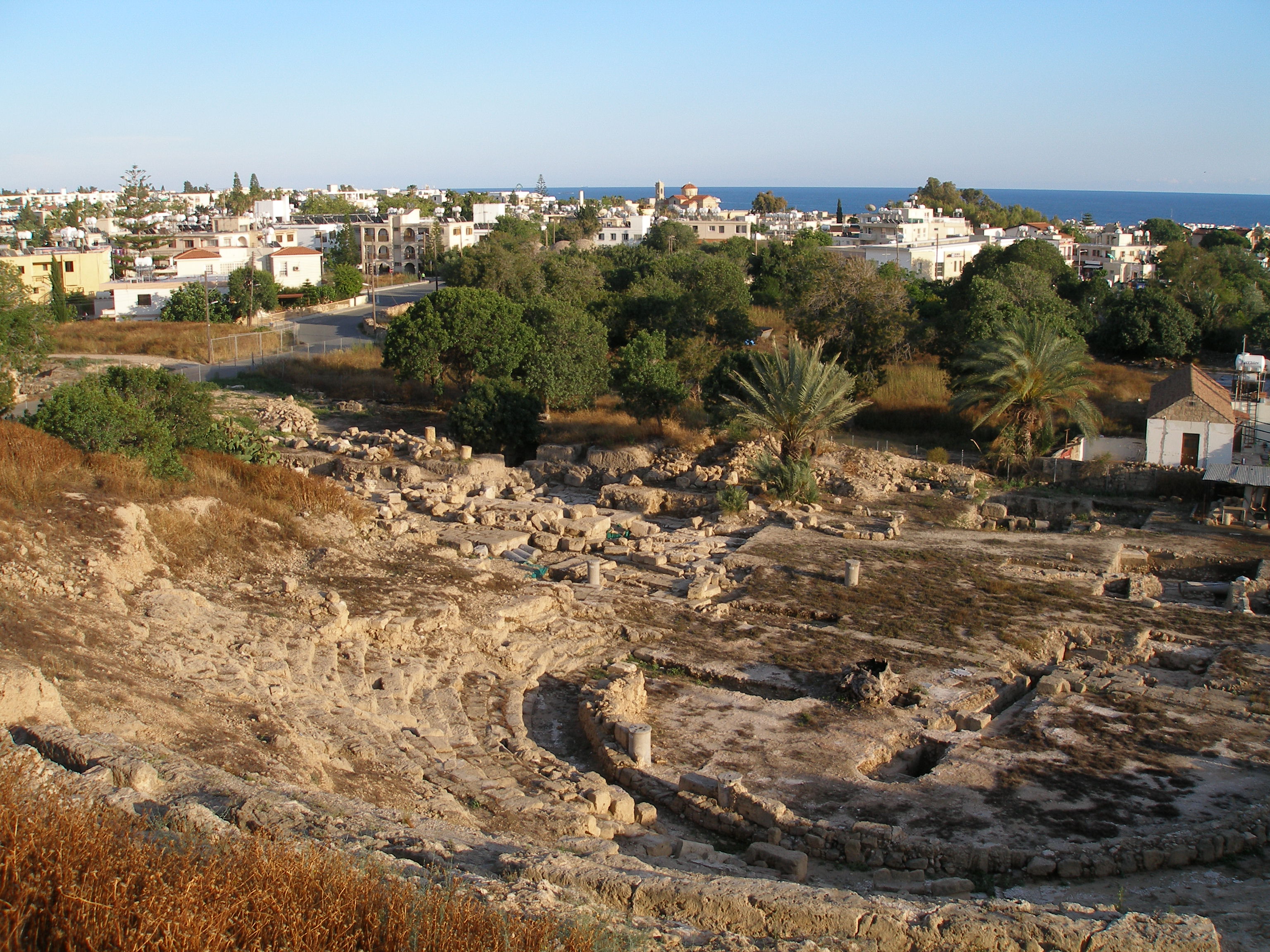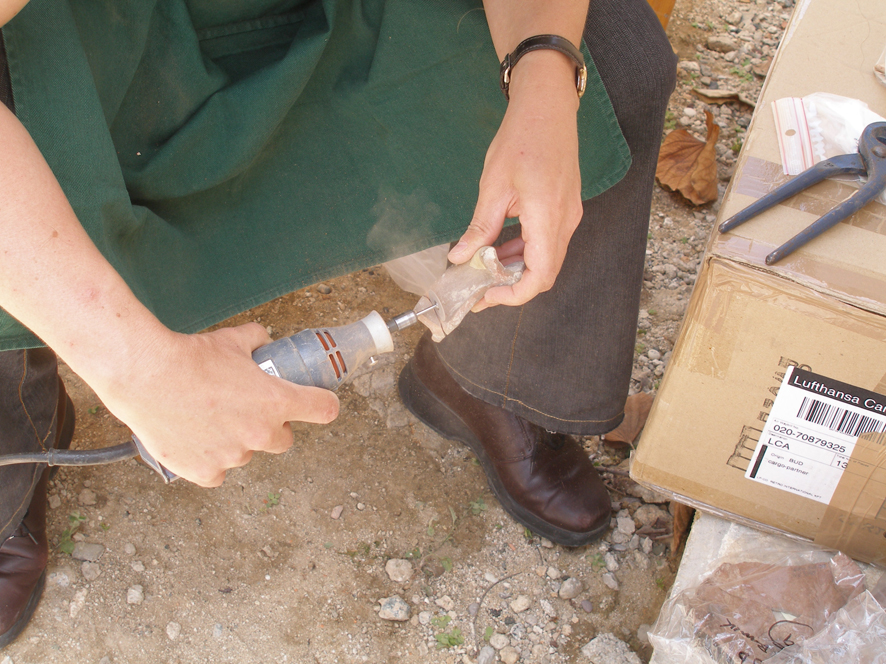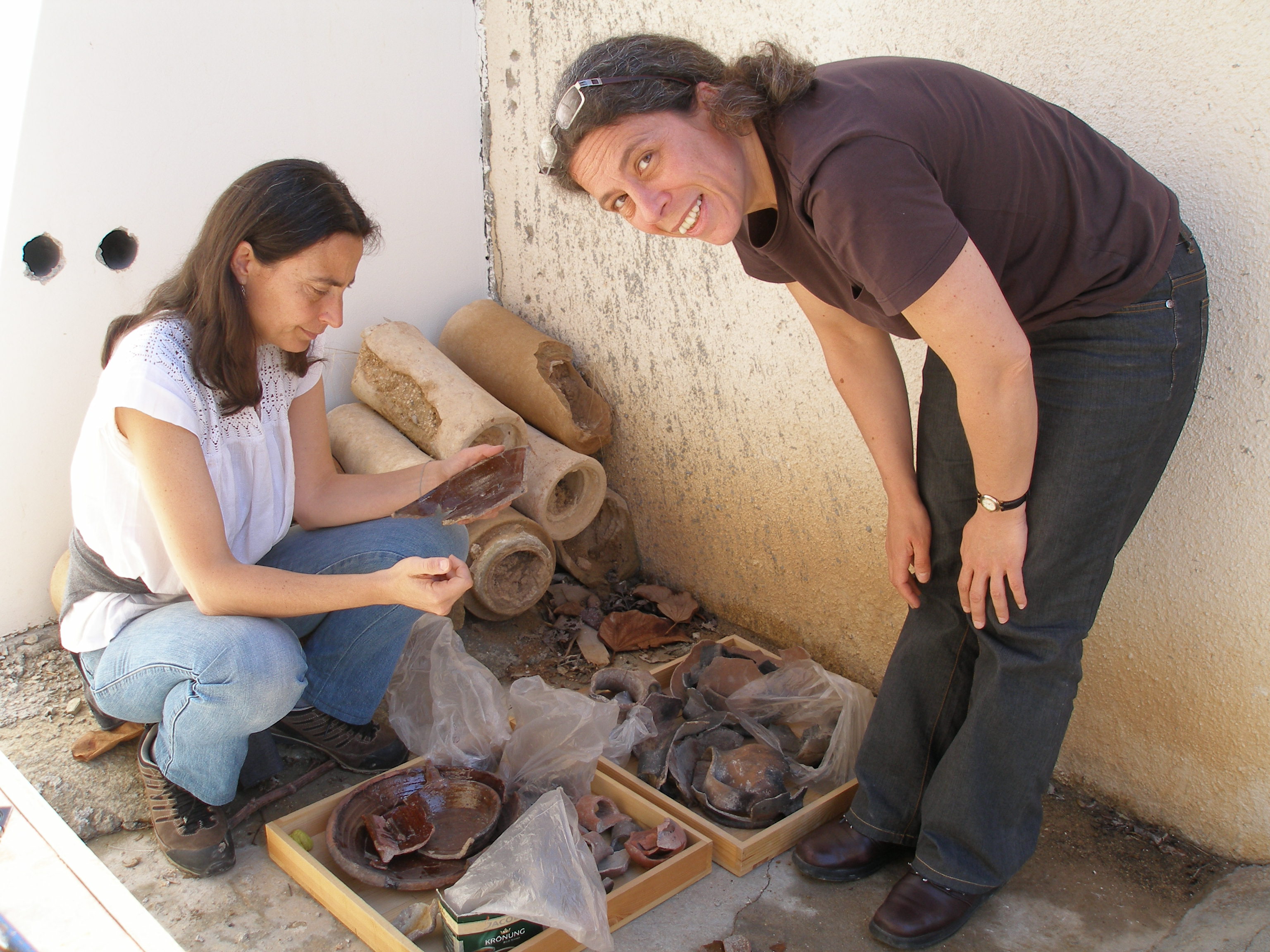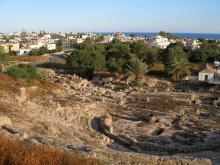
Paphos Theater, Fabrika site
Tomb of Odos Ikarou
Paphos
Cyprus
See map: Google Maps
Convent of Agios Theodoros
Nicosia
Cyprus
See map: Google Maps
CY
In May 2013, members of the POMEDOR team went to Paphos and Nicosia to sample cooking and table wares for various archaeometric analyses: chemical, petrographic and residue analysis.
The aims of this sampling campaign were to:
- create reference chemical group(s) for the Paphos Theatre workshop;
- identify sources of import;
- begin investigations on the use of cooking wares.
Work concentrated on three close assemblages of the late 13th century:
- a post-earthquake context from Theatre site (Fabrika Hill) in Paphos, excavated by the University of Sydney. The deposit is from a well that was filled and sealed in the course of a very short time after an earthquake as the area was cleared, the suggested date is 1303 (Green et al. in press). In addition, kiln furniture and pottery wasters found in several sectors of the theater give evidence of pottery production at the site (Cook and Green 2002);
- a household assemblage found in a Roman-period tomb in Paphos, in secondary use as a house or a storage area for a house (Raptou 2006; Gabrieli 2008).
- the convent of Agios Theodoros in Nicosia.

Samples chosen for chemical analysis included tripod stilts and wasters of sgraffito and slip-painted wares found in the Paphos Theater contexts. They will enable to define chemically the "Paphos Theatre" production, and to compare it to the "Paphos Lemba" production (e.g. Papanikola-Bakirtzi 1993) previously characterized at the Laboratoire de Céramologie in Lyon (Waksman and François 2004-2005, Waksman and von Wartburg 2006).
The choice of samples for residues analysis was directed by the wish to examine on the one hand what changes in use, if any, may be identified between the local cooking vessels and those imported from the Levant (Waksman 2002), and on the other, whether there is a differentiation of function between glazed and non-glazed cooking vessels of the same shape (Gabrieli 2006).

S. Gabrieli, S.Y. Waksman
photos @ C. Brun
Cook, H.K.A., Green, J.R., 2002, Medieval Glazed wares from the theatre site at Nea Pafos, Cyprus: Preliminary Report, RDAC, 413-424.
Gabrieli, R.S, 2006, Silent Witnesses: The Evidence of Domestic Wares of the 13th-19th Centuries in Paphos, Cyprus for Local Economy and Social Organisation, PhD thesis, University of Sydney.
Gabrieli, R.S., 2008, Towards a Chronology - The Medieval coarse ware from the Tomb on Icarus Street, Kato Pafos, RDAC, 423-454.
Green, J.R., Gabrieli, R.S., Cook, H.K.A., Stern, E.J., McCall, B., Lazer, E., in press, Paphos 8 August 1303 Snapshot of a Destruction.
Papanikola-Bakirtzis, D., 1993, Cypriot medieval glazed pottery: answers and questions, in The Sweet Land of Cyprus, Nicosia, 115-130.
Raptou, E., 2006, The built tomb in Icarus Street, Kato Pafos, RDAC, 317-342.
Waksman, S.Y., 2002, Céramiques levantines de l'époque des Croisades : le cas des productions à pâte rouge des ateliers de Beyrouth, Revue d'Archéométrie, 26, 67-77.
Waksman, S.Y., François V., 2004-2005, Vers une redéfinition typologique et analytique des céramiques byzantines du type Zeuxippus Ware, BCH, 128-129.2.1, 629-724.
Waksman, S.Y., von Wartburg, M.-L., 2006, "Fine-Sgraffito Ware", "Aegean Ware", and other wares: new evidence for a major production of Byzantine ceramics, RDAC, 369-388



